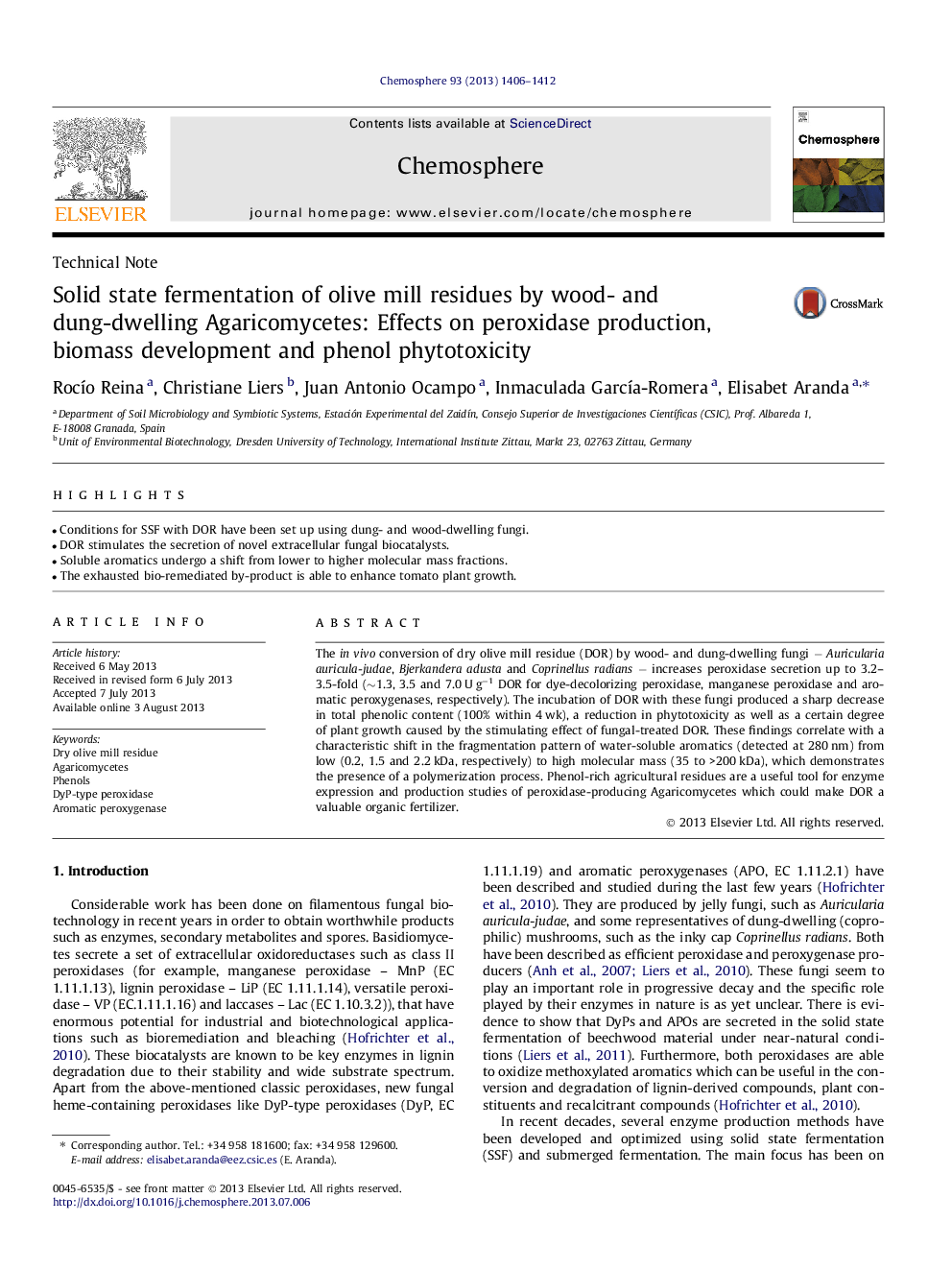| Article ID | Journal | Published Year | Pages | File Type |
|---|---|---|---|---|
| 4409200 | Chemosphere | 2013 | 7 Pages |
•Conditions for SSF with DOR have been set up using dung- and wood-dwelling fungi.•DOR stimulates the secretion of novel extracellular fungal biocatalysts.•Soluble aromatics undergo a shift from lower to higher molecular mass fractions.•The exhausted bio-remediated by-product is able to enhance tomato plant growth.
The in vivo conversion of dry olive mill residue (DOR) by wood- and dung-dwelling fungi − Auricularia auricula-judae, Bjerkandera adusta and Coprinellus radians − increases peroxidase secretion up to 3.2–3.5-fold (∼1.3, 3.5 and 7.0 U g−1 DOR for dye-decolorizing peroxidase, manganese peroxidase and aromatic peroxygenases, respectively). The incubation of DOR with these fungi produced a sharp decrease in total phenolic content (100% within 4 wk), a reduction in phytotoxicity as well as a certain degree of plant growth caused by the stimulating effect of fungal-treated DOR. These findings correlate with a characteristic shift in the fragmentation pattern of water-soluble aromatics (detected at 280 nm) from low (0.2, 1.5 and 2.2 kDa, respectively) to high molecular mass (35 to >200 kDa), which demonstrates the presence of a polymerization process. Phenol-rich agricultural residues are a useful tool for enzyme expression and production studies of peroxidase-producing Agaricomycetes which could make DOR a valuable organic fertilizer.
